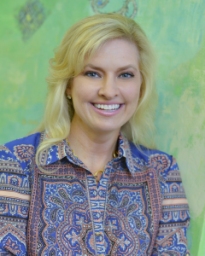Healthcare is always in the news: advances in healthcare technology, groundbreaking research, and healthcare disparities are just a few. Yet there’s one story we rarely hear: the role of hospital or medical center related healthcare foundations. These foundations play important roles in communities across the country, bringing together leadership, vision, money and initiative to help improve the delivery of healthcare.
Wanting to learn more we spoke with Tammie Ritchey, Vice President of Development and Executive Director of Regional One Health Foundation in Memphis Tennessee. For the past 10 years Ritchey and the foundation board of directors have worked behind the scenes to help improve healthcare across the mid-South.
We started our conversation wanting to know – in general terms – the role of a foundation in the life of a nonprofit healthcare system. Not surprisingly, fundraising is a foundation’s most obvious role. Foundations raise money for research, new buildings, and investments in projects that improve patient outcomes and increase employee training, and more. But, according to Ritchey, fundraising isn’t always the most important role.
“A less visible role is the work of keeping the mission and vision of the healthcare system in the public’s mind,” Ritchey shared. “The relationships a foundation forges with donors translates into the making of very strong advocates for not only the system it represents but also for improved community health care.”
Here’s an example she shared, related to the health system’s challenges in 2010, and how things have changed. “The system was losing a great deal of money; we were downsizing staff, looking at service lines to cut, and working with an interim executive team for a couple of years. Now, we have stable permanent leadership, progressive minded thought provoking visionary leaders who have created a clear mission and vision for the system, and are putting together the strategies to make the vision a reality. We have a formal physician’s group to care for our patients now, which we did not have before, and all team members are playing from the same play book, all pointed in the same direction.”
Communication and relationships were key to changing the situation. “During difficult economic times, the foundation spent a great deal of time communicating what was going on inside the walls of the hospital with those who support us. We helped tell the story that was not getting told in the papers. We were able to strengthen a lot of relationships with community leaders even though we were not raising a lot of money. With the changes in our financial situation, we are now raising a great deal more money, and much of that is because we had established such strong relationships with donors during our lean years.”
You can learn more about Regional One Health Foundation at www.regionalonehealthfoundation.org or by calling (901) 545-8773.
Next week: the role of the board
Mel and Pearl Shaw are the authors of “Prerequisites for Fundraising Success” and “The Fundraiser’s Guide to Soliciting Gifts.” They provide fundraising counsel to nonprofits. Visit them at www.saadandshaw.com. Follow them on Twitter: @saadshaw.










